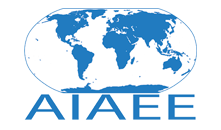Keywords
adoption, water conservation, water treatment, diffusion, technology, nursery and greenhouse industry
Abstract
Nursery and greenhouse operations require significantly large amounts of water to maintain product quality and often use more than what is needed by the crop being grown. The nursery industry’s use of water is highly criticized and adds to arguments against agricultural water use with increasingly limited water resources available globally. The purpose of this study was to explore the barriers and motivators associated with nursery and greenhouse growers’ adoption of water conservation and treatment technologies. In-depth interviews were conducted with 24 operators across the U.S. to identify their perceptions of new water-saving technologies and treatments based on the five attributes of an innovation identified by Rogers (2003). The findings revealed growers are aware of water-saving technologies and the rate of adoption depends on a variety of factors including: perceived cost, lack of ability of their workforce to use the new technology due to its complexity, and belief that their product will be worth more if it is grown in an environmentally-friendly manner. Barriers to adoption included the high cost of replacing equipment, incompatibility with existing systems, and the perception that new technologies do not fit in with the traditional hands-on approach to horticulture. Suggested extension programs to reach growers include developing materials that highlight the economic benefit of adoption and cost recovery, YouTube videos that reduce issues with perceived complexity growers can use with their workers, and programs that emphasize how technology fits in with the culture of the horticulture industry.
Recommended Citation
Lamm, A. J.,
Warner, L. A.,
Taylor, M. R.,
Martin, E. T.,
White, S.,
&
Fisher, P.
(2017).
Diffusing Water Conservation and Treatment Technologies to Nursery and Greenhouse
Grower.
Journal of International Agricultural and Extension Education, 24(1), 105-119.
DOI: https://doi.org/10.5191/jiaee.2017.24110



